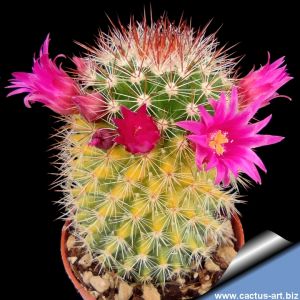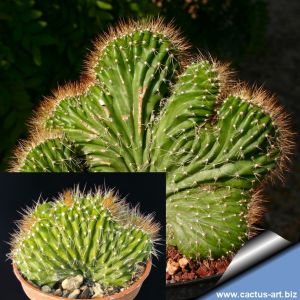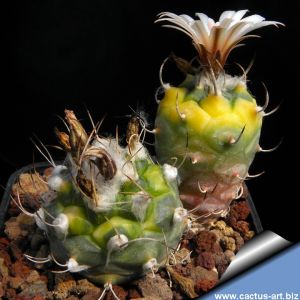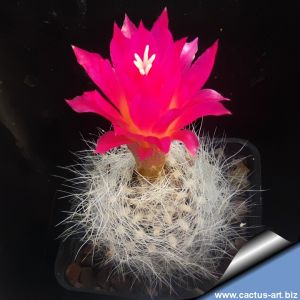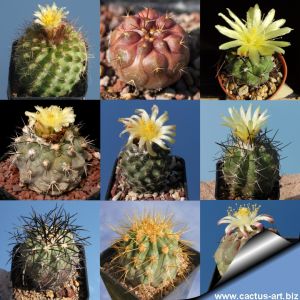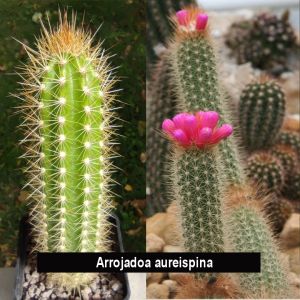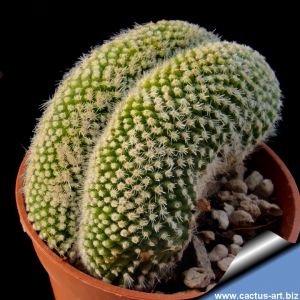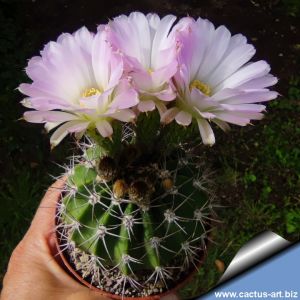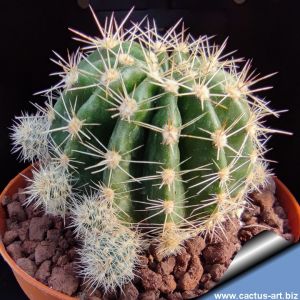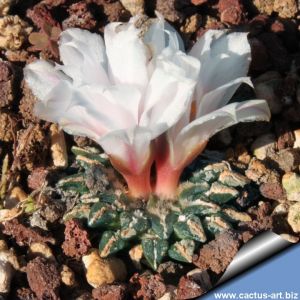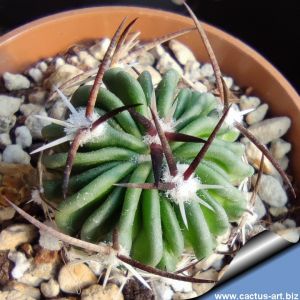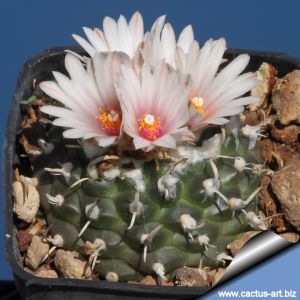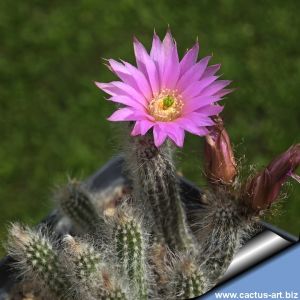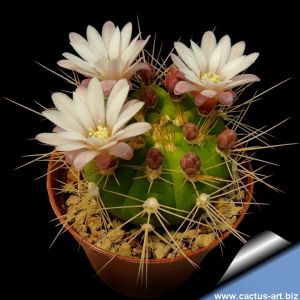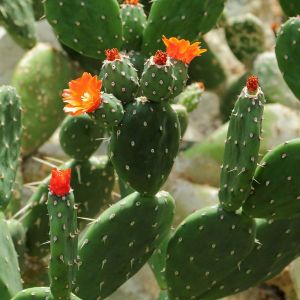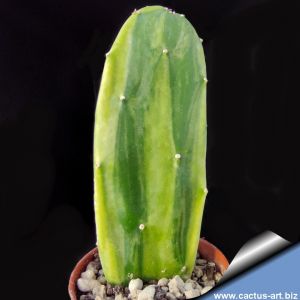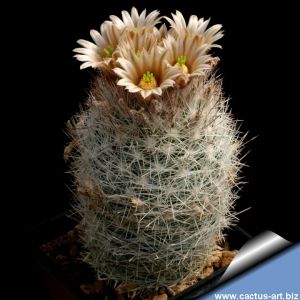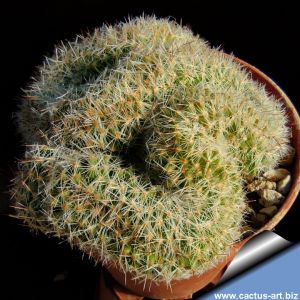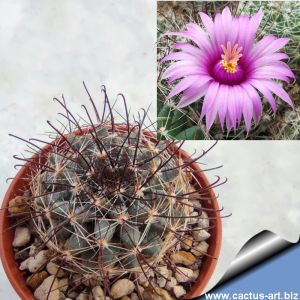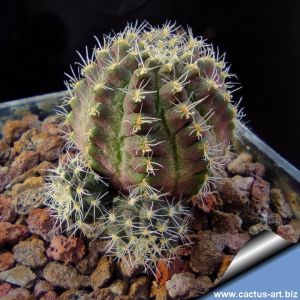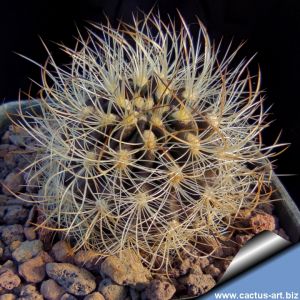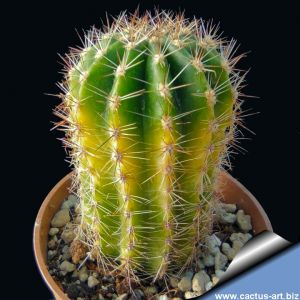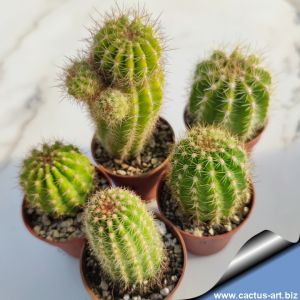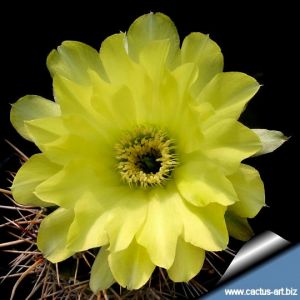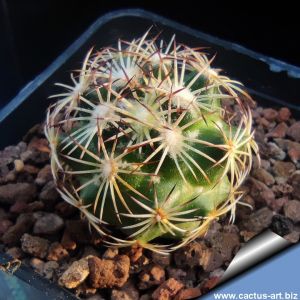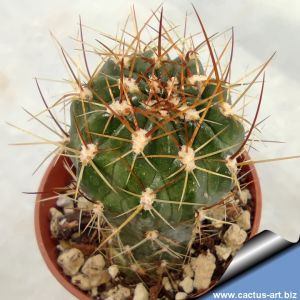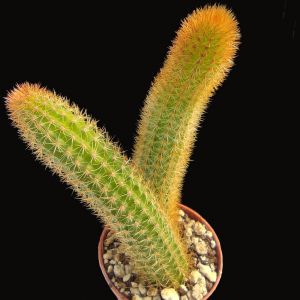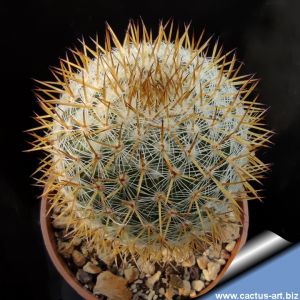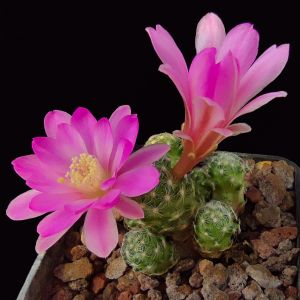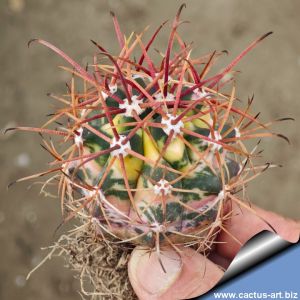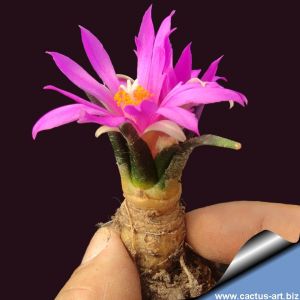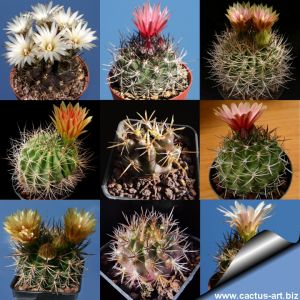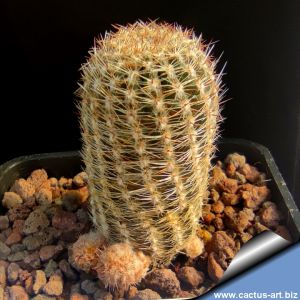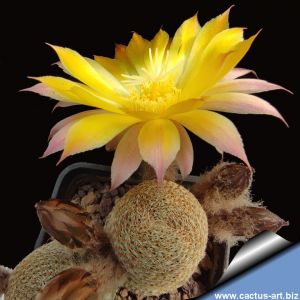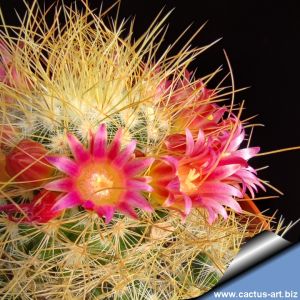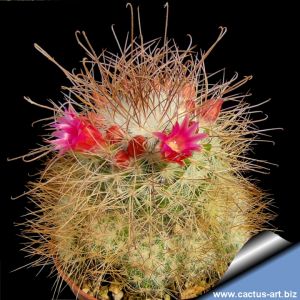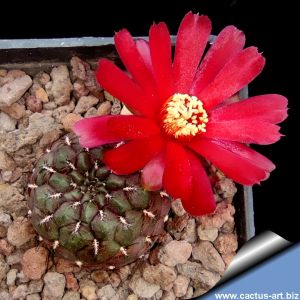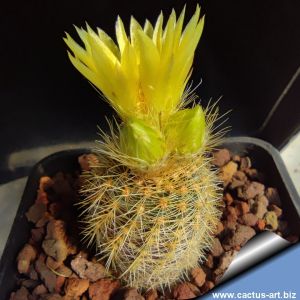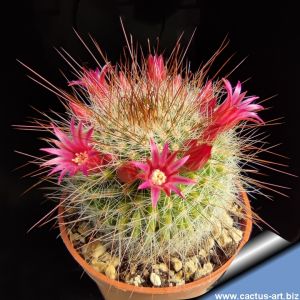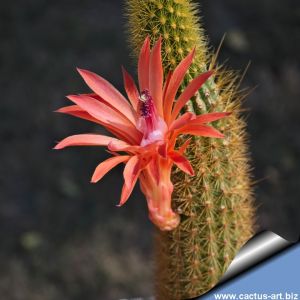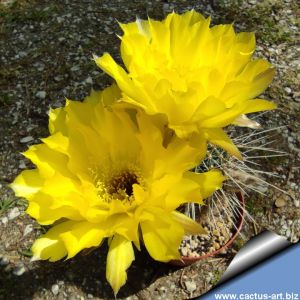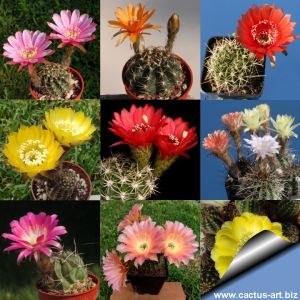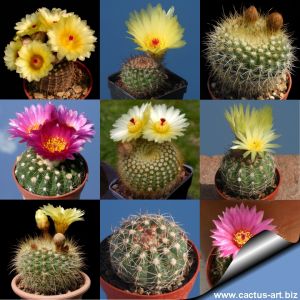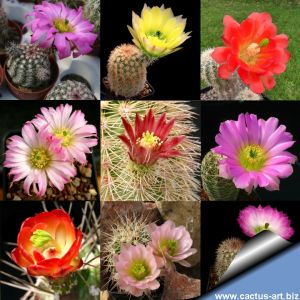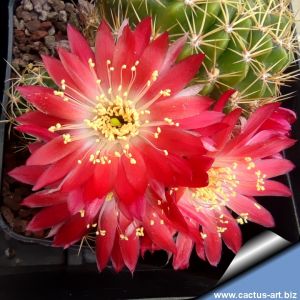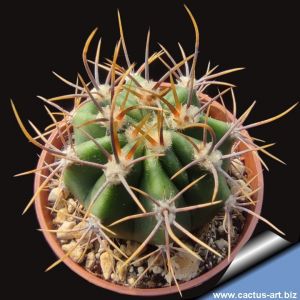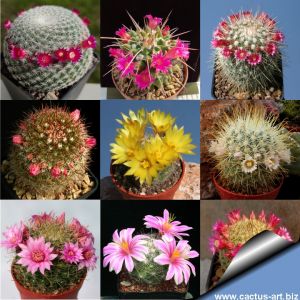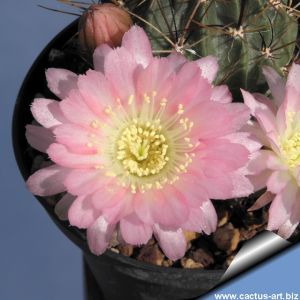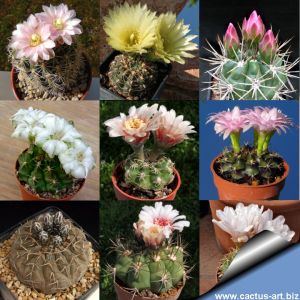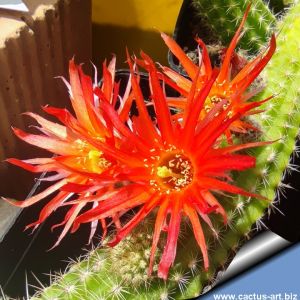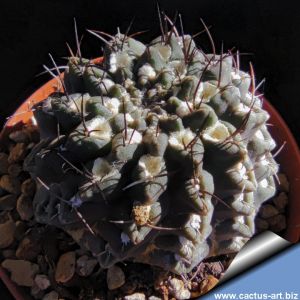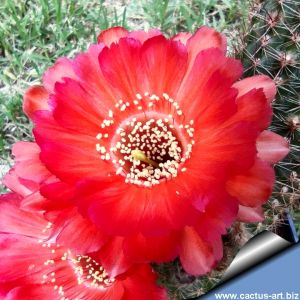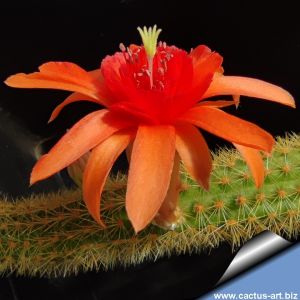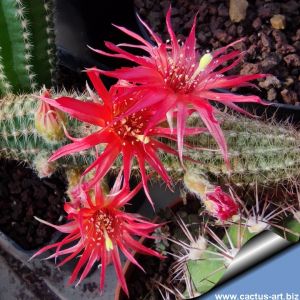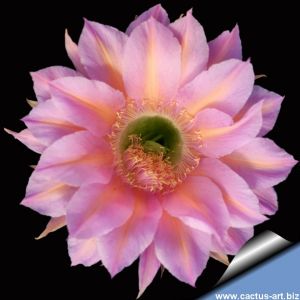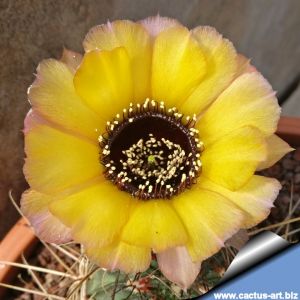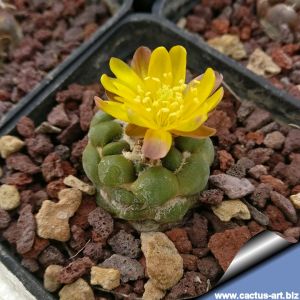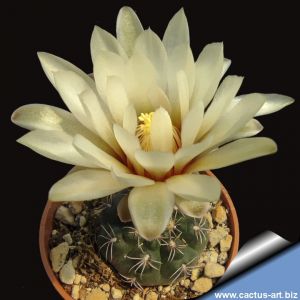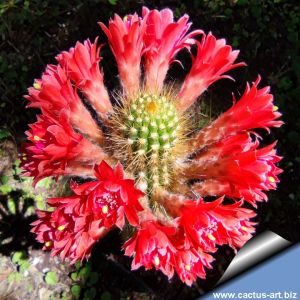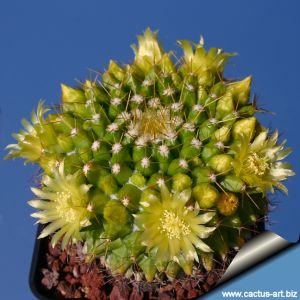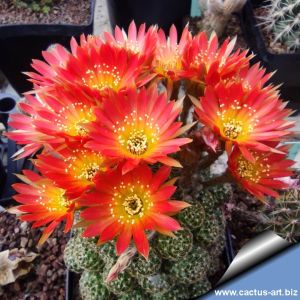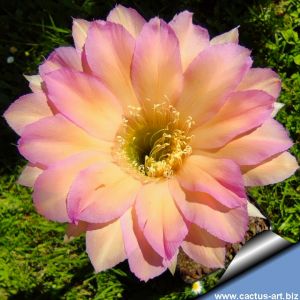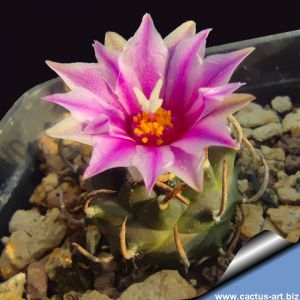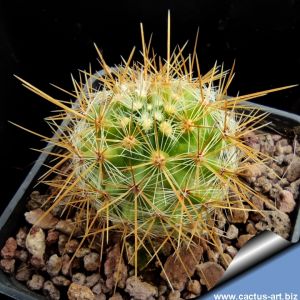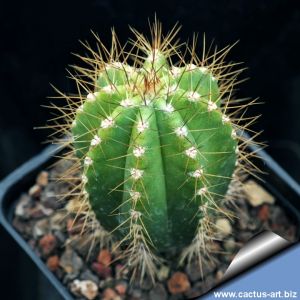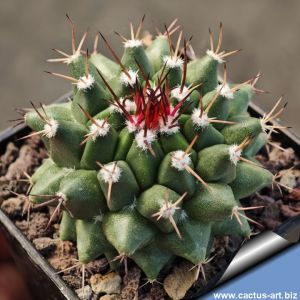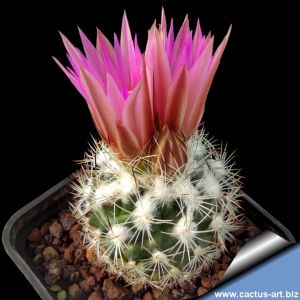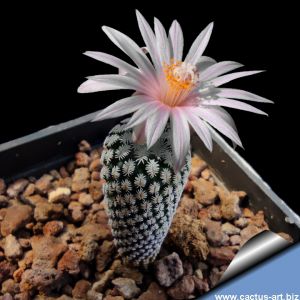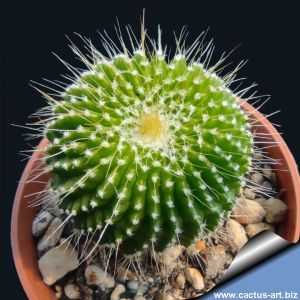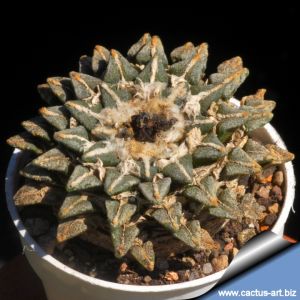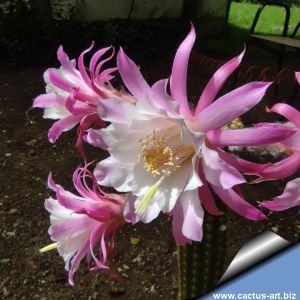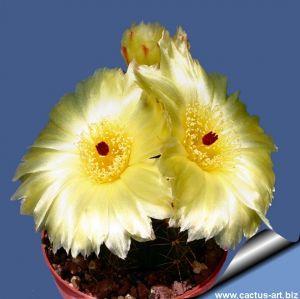-
1
Variegated plants have sectors, patches or stripes with two or more colours. Plants with variegated body are highly prized. Very variable.
-
2
Neobuxbaumia euphorbioides f. cristata is very strong and can grow up to 1 m in diameter and height (or more).
-
3
Variegated plants have sectors, patches or stripes with two or more colours. Plants with variegated body are highly prized. Very variable.
-
4
Eriosyce gerocephala, best known as Neoporteria gerocephala is distinguished by thin, soft and flexible cream-white spines. Very nice!
-
5
A diverse mix of Copiapoa species and seed-grown hybrids, including some seed collected from their natural habitat. Each plant is one-of-a-kind, displaying unique shapes, spination patterns, and flower colors.
-
6
Arrojadoa aureispina is a clustered, cylinder-shaped cactus that produces apical clusters of pinkish purple flowers. The specific name “aureispina”, yellow spined, refers to characteristic golden-yellow spines of this plant.
-
7
-
8
Elegant white flowers tinged with violet. Beautiful!
-
9
-
10
A small and highly attractive variety with disk-like bodies and flattened triangular tubercles barely rising above the soil. The main body is a large underground caudex. Flowers are white or very pale pink.
-
11
Cactus with globular stems that elongate with age. The name “pentacanthus” comes from its five spines per areole: three major upper spines, two conical and ascending, one flattened yellow to brown, and two minor lower spines.
-
12
Stem dark green-bluish, semi-globose, depressed, divided into tubercles, merging in a tuberous root 3-5 cm long. The flowers are light cream to slightly pinkish, with reddish throat. They bloom very early in winter (January-February in Europe)
-
13
Small, branched cactus with tuberous roots and slender stems up to 25 cm long and 1 cm in diameter. The spines are hairlike, ranging from cream to whitish-grey, reddish at the tips, giving the stems a woolly look. Synonim: Wilcoxia schmollii.
-
14
Gymnocalycium chacoense is a highly interesting species, distinct from others in the genus, with straight, golden, bristly spines giving it a unique look. Flowers are white or pinkish. Forms large clusters as it matures.
-
15
Opuntia Quitensis is a bushy species formed by small bright green segments. The orange to bright red flowers create a wonderful contrast to the green of the segments, giving this plant a truly exotic look overall.
-
16
-
17
Thick white snowballs, with rusty-pink tipped spines.
-
18
-
19
Hooked central spines all twisted counterclockwise create a distinctive spiral pattern. The real showstopper? Exceptionally large flowers in deep pink-magenta that dazzle against the spiny armor. Truly one of nature's most remarkable creations!
-
20
-
21
A very characteristic cactus bearing long, slender, soft, and pliable spines in shades from creamy-white to beige or brown.
-
22
-
23
-
24
Very attractive plants with sturdy, long spines and showy yellow flowers that bloom in multiple flushes during the warm season.
-
25
Plant with round, dark green stems, white-yellow radial spines, and a dark, arched central spine. Large, glossy yellow flowers.
-
26
-
27
-
28
-
29
Nature's tiny masterpiece: dwarf globes wrapped in comb-like silky spines. Neon-pink blooms dwarfing their host! Substantial taproot. Painstakingly slow growth, making each specimen precious.
-
30
Ferocactus acanthodes featuring red spines and yellow, white, or pink variegation on the body. Each plant is distinct, with unique patterns and colors. Rare and captivating specimens.
-
31
Occasional few short spines per areole (extremely rare trait). At flowering size already!
-
32
Mix of Eriosyce from the Horridocactus group, assorted with various species and seed-grown hybrids. Each plant is one-of-a-kind, featuring unique shapes, spination, and flower colors.
-
33
-
34
Beautiful plants with pectinated cream spines, large yellow flower. Very free flowering.
-
35
Pretty with long twisted yellow spines, magnificent!
-
36
The long, thin, twisted spines give the plant a soft and highly ornamental appearance. This distinctive spine morphology sets it apart from other variants of the species, making it especially valued among collectors.
-
37
Elegant plant with bright carmine red flowers.
-
38
Notocactus rechensis is a lovely dwarf species that branches strongly at the base and can form large clusters. The yellow flowers reach 3 centimeters in diameter.
-
39
-
40
The golden rat tail is a cactus with long hanging or creeping branches with thin branches up to 1 meter or more, short and bristly gold-colored spines completely cover the surface of the stems. Flowers: orange or salmon pink, 4 to 6 cm long.
-
41
-
42
Mix of Mammillarias, featuring various species, hybrids, and seed-grown cultivars. Each plant is one-of-a-kind, with unique shapes, spination, and flower colors.
-
43
Mix of Notocactus, featuring various species, hybrids, and seed-grown cultivars. Each plant is one-of-a-kind, with unique shapes, spination, and flower colors.
-
44
Mix of Echinocereus assorted with various species and seed-grown hybrids. Each plant is one-of-a-kind, featuring unique shapes, spination, and flower colors.
-
45
-
46
-
47
Mix of Mammillarias, featuring various species, hybrids, and seed-grown cultivars. Each plant is one-of-a-kind, with unique shapes, spination, and flower colors.
-
48
Tender pink petals with a creamy heart. Delicate and refined flowers. Very pretty.
-
49
Mix of Gymnocalycium species, hybrids, and seed-grown cultivars - Each plant is unique, with different shapes and colors. A very interesting selection at an affordable price, perfect for those who want to start or expand their collection.
-
50
-
51
A small-growing plant with a low stem, spineless or shortly spiny, in dark purple to nearly black tones. Flat, solitary, mostly underground, and supported by a tuberous root.
-
52
Chamaelobivia cv. ESP 2009.40.2 hybrid (Chamaecereus Granat x Lobivia claeysiana)
-
53
Beautiful cultivar with thin stems and two-tone flowers with light orange and carmine-orange petals.
-
54
-
55
-
56
This is a selected clone of Lobivia jajoiana. The yellow petals have lilac shaded edges. The hymen (or throat ring of the flower) is always of a very dark purple to black.
-
57
A tiny geophytic cactus with an olive-green spherical stem marked by smooth, rounded tubercles. Its sunken woolly areoles lack spines. A deep tuberous root anchors the plant. Bright yellow flowers, larger than the stem, emerge at the apex.
-
58
Flattened spherical body, olive-green or dark gray-green. White areoles with short, appressed spines pointing downward. Large cream-colored flowers with red throats, produced abundantly even on young plants.
-
59
"RED HILDE" is an extremely floriferous hybrid with red flowers produced at the tips of the branches. It blooms repeatedly from spring until the end of summer.
-
60
-
61
Exceptionally vivid, showy flowers with elongated red-orange petals and a brilliant yellow throat create a fiery contrast. Blooms appear abundantly and simultaneously, forming luminous clusters that cover the entire plant.
-
62
-
63
Syn: Turbinicarpus schmiedickeanus v. rubriflorus
-
64
Pretty with long yellowish spines.
-
65
Only few ribs, green-blue body, yellow to brown spines.
-
66
Mammillaria polyedra is a low growing cactus, solitary at first, later branching to form colonies or cushions. Flower pink or reddish.
-
67
-
68
Initially bearing only short white pectinated spines, it matures into producing long twisted central spines. Early blooming, even young plants display beautiful cream flowers with pink striping.
-
69
NEW. Selected form with only one or few bristly spines per areole.
-
70
A star-shaped disk that lives half-buried! It forms flat, geometric rosettes no larger than a coin and hides a long, fleshy taproot underground. A gem for lovers of camouflaged, minimalist plants.
-
71
-
72
Under intense light or cold, the skin develops vivid red-purple hues. Its broad yellow blooms have a unique silky brightness that enhances the plant’s ornamental appeal.

